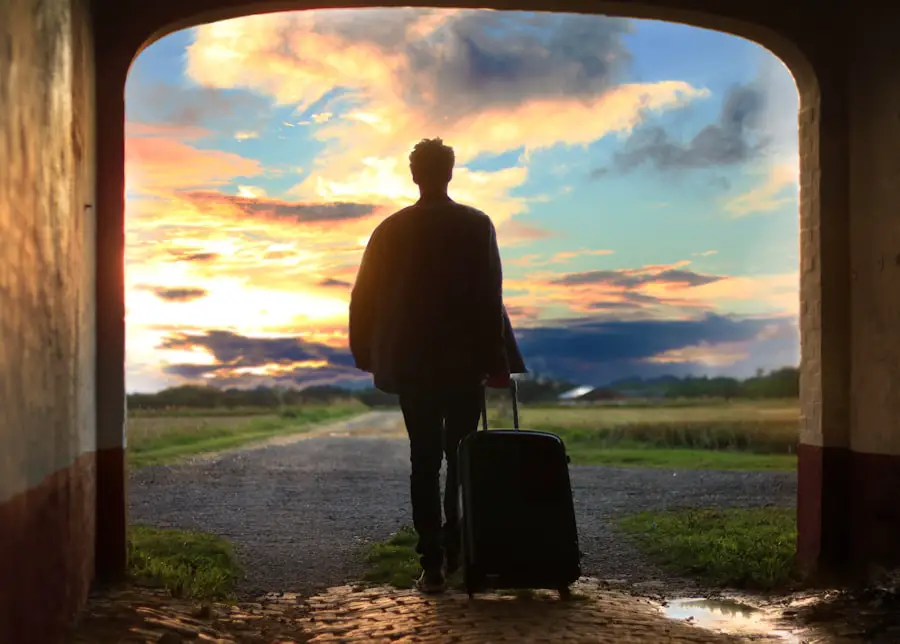Nestled within the heart of the Canadian Rockies, Banff is a picturesque town that serves as a gateway to one of the most stunning national parks in the world. Established in 1885, Banff National Park is Canada’s first national park and has been designated a UNESCO World Heritage Site due to its breathtaking landscapes, diverse ecosystems, and rich cultural history. The town itself is a vibrant hub, offering a unique blend of outdoor adventure, cultural experiences, and a charming alpine atmosphere.
Visitors are drawn not only by the majestic mountains and pristine lakes but also by the opportunity to engage in a variety of recreational activities year-round. The allure of Banff extends beyond its natural beauty; it is also steeped in history and culture. The indigenous peoples, including the Stoney Nakoda, have inhabited this region for thousands of years, and their rich traditions and stories add depth to the experience of visiting.
The town features numerous galleries, museums, and cultural events that celebrate this heritage. As one explores the winding streets of Banff, they will encounter a delightful mix of shops, restaurants, and accommodations that cater to every taste and budget. Whether one seeks solitude in nature or the thrill of adventure, Banff offers an unparalleled experience that captivates the hearts of all who visit.
Key Takeaways
- Banff is a picturesque town located in the Canadian Rockies, known for its stunning natural beauty and outdoor activities.
- Spring in Banff brings a sense of renewal and rejuvenation, with blooming wildflowers and the return of wildlife.
- Summer in Banff is the perfect time for adventure seekers, with opportunities for hiking, biking, and water sports in the surrounding lakes and rivers.
- Fall in Banff is a visual treat, as the landscape transforms into a vibrant display of red, orange, and yellow foliage.
- Winter in Banff turns the town into a snowy wonderland, offering opportunities for skiing, snowboarding, and other winter sports.
- The best time for outdoor activities in Banff is during the summer months, when the weather is warm and the trails are clear of snow.
- The best time for wildlife viewing in Banff is during the spring and fall, when animals are more active and visible.
- When planning a visit to Banff, consider the activities you want to do and the scenery you want to see to choose the perfect time to visit.
Spring in Banff: The Season of Rebirth
As winter’s grip begins to loosen, spring emerges in Banff with a gentle awakening of nature. The snow-capped peaks gradually reveal their rocky faces, while the valleys come alive with vibrant wildflowers and budding trees. This transitional season is marked by a sense of renewal, as wildlife stirs from hibernation and migratory birds return to the area.
The melting snow feeds the rivers and lakes, creating a dynamic landscape that is both beautiful and invigorating. Spring in Banff is not just a visual spectacle; it is also a time for reflection and rejuvenation. The arrival of spring invites outdoor enthusiasts to explore the myriad trails that wind through the park.
Hiking becomes increasingly popular as temperatures rise, with trails like Tunnel Mountain offering stunning views of the surrounding landscape. The moderate weather allows for comfortable exploration, making it an ideal time for families and casual hikers alike. Additionally, spring is an excellent time for photography, as the contrast between the lingering snow and emerging greenery creates striking images.
Events such as the Banff Mountain Film and Book Festival also take place during this season, celebrating adventure and storytelling in the great outdoors.
Summer in Banff: The Peak of Adventure

Summer in Banff is synonymous with adventure and exploration. With long days filled with sunshine and warm temperatures, this season attracts visitors from around the globe eager to experience the great outdoors. The national park transforms into a playground for those seeking adrenaline-pumping activities such as hiking, mountain biking, rock climbing, and kayaking.
Iconic locations like Lake Louise and Moraine Lake become bustling hubs for tourists eager to soak in their stunning turquoise waters and dramatic mountain backdrops. The extensive network of trails offers something for everyone, from leisurely strolls along the lakeshores to challenging multi-day hikes like the Skyline Trail. Wildlife sightings are common during summer months, as animals such as elk, bears, and deer are more active.
Guided tours provide opportunities for visitors to learn about the local flora and fauna while ensuring safety in bear country. Additionally, summer festivals such as the Banff Summer Arts Festival showcase local talent through music, theater, and art exhibitions, enriching the cultural tapestry of this vibrant community.
Fall in Banff: A Symphony of Colors
| Metrics | Values |
|---|---|
| Visitors | 10,000 |
| Duration | 3 weeks |
| Peak Season | September – October |
| Main Attraction | Fall foliage |
As summer fades into autumn, Banff undergoes a breathtaking transformation that captivates all who witness it. The landscape bursts into a riot of colors as aspens turn golden yellow and evergreens stand tall against a backdrop of fiery red and orange foliage. This seasonal shift creates a picturesque setting that draws photographers and nature lovers alike.
The crisp air carries the scent of fallen leaves, while the sound of rustling foliage adds to the serene ambiance of this enchanting time of year. Fall is also an excellent time for outdoor activities such as hiking and biking, as the cooler temperatures make for comfortable exploration. Trails like Johnston Canyon offer stunning views of waterfalls framed by autumn colors, while less crowded paths provide solitude for those seeking peace in nature.
Wildlife viewing remains rewarding during this season; animals prepare for winter by foraging for food, making them more visible as they gather supplies. The annual Banff Mountain Film Festival also takes place in fall, celebrating adventure films that inspire exploration and appreciation for the natural world.
Winter in Banff: A Snowy Wonderland
Winter casts a magical spell over Banff, transforming it into a snowy wonderland that attracts winter sports enthusiasts from around the world. The town becomes a hub for skiing and snowboarding, with world-class resorts like Sunshine Village and Lake Louise Ski Resort offering pristine slopes and breathtaking views. The powdery snow creates ideal conditions for both beginners and seasoned skiers alike, while snowshoeing and cross-country skiing provide alternative ways to explore the winter landscape.
Beyond skiing, winter in Banff offers unique experiences such as ice skating on frozen lakes or taking part in guided ice walks through stunning canyons adorned with ice formations. The ethereal beauty of frozen waterfalls at Johnston Canyon is a must-see during this season. Additionally, winter festivals like SnowDays celebrate the season with activities ranging from ice carving competitions to snowshoe races, fostering a sense of community among locals and visitors alike.
The cozy atmosphere of Banff’s lodges and restaurants provides warmth after a day spent in the cold, making it an ideal time for relaxation and reflection.
Best Time for Outdoor Activities in Banff

Determining the best time for outdoor activities in Banff largely depends on personal preferences and desired experiences. For those who thrive on adventure during warmer months, late spring through early fall offers an abundance of opportunities. Hiking trails are accessible from late June onwards when snow has melted sufficiently at lower elevations.
Popular trails like Sulphur Mountain or Bow Valley are ideal for day hikes during this period when wildflowers bloom and wildlife is abundant. Conversely, winter enthusiasts will find their paradise from December through March when snowfall blankets the region. Skiing and snowboarding take center stage during these months at renowned resorts that cater to all skill levels.
Snowshoeing trails become accessible as well, allowing visitors to traverse serene landscapes untouched by crowds. Each season presents its own unique set of activities; thus, understanding what one hopes to achieve during their visit will guide them toward choosing the optimal time for outdoor adventures.
Best Time for Wildlife Viewing in Banff
Wildlife viewing in Banff is an exhilarating experience that varies throughout the year based on animal behavior and seasonal changes. Spring is particularly rewarding as bears emerge from hibernation around late March to early April; this is when visitors have their first chance to spot these magnificent creatures after months of dormancy. Elk are also commonly seen during this time as they migrate to lower elevations seeking food sources.
Summer continues to be an excellent time for wildlife viewing due to increased animal activity; however, it’s essential to remain cautious and respectful of their habitats. Early mornings or late evenings are prime times for spotting animals such as deer or moose grazing near water sources. Fall presents another opportunity as animals prepare for winter; elk are often seen during mating season in September when they engage in their distinctive rutting behavior.
Each season offers unique wildlife viewing opportunities that enhance the overall experience of visiting Banff National Park.
Choosing the Perfect Time to Visit Banff
Selecting the perfect time to visit Banff ultimately hinges on individual interests and desired experiences within this stunning national park. Each season brings its own charm—spring heralds renewal with blooming flowers; summer invites adventure with endless outdoor activities; fall dazzles with vibrant foliage; while winter enchants with its snowy landscapes perfect for skiing or cozy retreats by the fire. Understanding what one hopes to achieve during their visit will help guide their decision-making process.
Whether seeking thrilling adventures or tranquil moments immersed in nature’s beauty, Banff offers something for everyone throughout the year. By considering factors such as weather conditions, wildlife activity, and personal preferences for outdoor pursuits, visitors can tailor their experience to create unforgettable memories in this breathtaking corner of Canada’s wilderness.
If you’re planning a trip to Banff, you’ll want to make sure you have all the necessary gear for your outdoor adventures. One essential item to consider is a high-quality sleeping bag, like the ones recommended in this article. Additionally, a rechargeable hand warmer can come in handy during chilly evenings in the mountains, as discussed in this article. And don’t forget to pack a portable phone charger to keep your devices powered up while exploring the stunning landscapes of Banff, as highlighted in this article.
FAQs
What is the best time to travel to Banff?
The best time to travel to Banff is during the summer months of June to August when the weather is warm and the hiking trails and outdoor activities are accessible.
When is the peak tourist season in Banff?
The peak tourist season in Banff is during the summer months of June to August when the weather is warm and the national park is bustling with visitors.
What is the weather like in Banff during the summer?
During the summer, the weather in Banff is generally mild with temperatures ranging from 10°C to 25°C (50°F to 77°F). It is the perfect time for outdoor activities such as hiking, biking, and wildlife viewing.
Are there any specific events or festivals in Banff during the summer?
Yes, Banff hosts several events and festivals during the summer including the Banff Yoga Festival, Banff Marathon, and Banff International String Quartet Festival.
Is it possible to visit Banff during the winter months?
Yes, Banff is also a popular destination for winter activities such as skiing, snowboarding, and ice skating. The winter months of December to February are ideal for winter sports enthusiasts.
